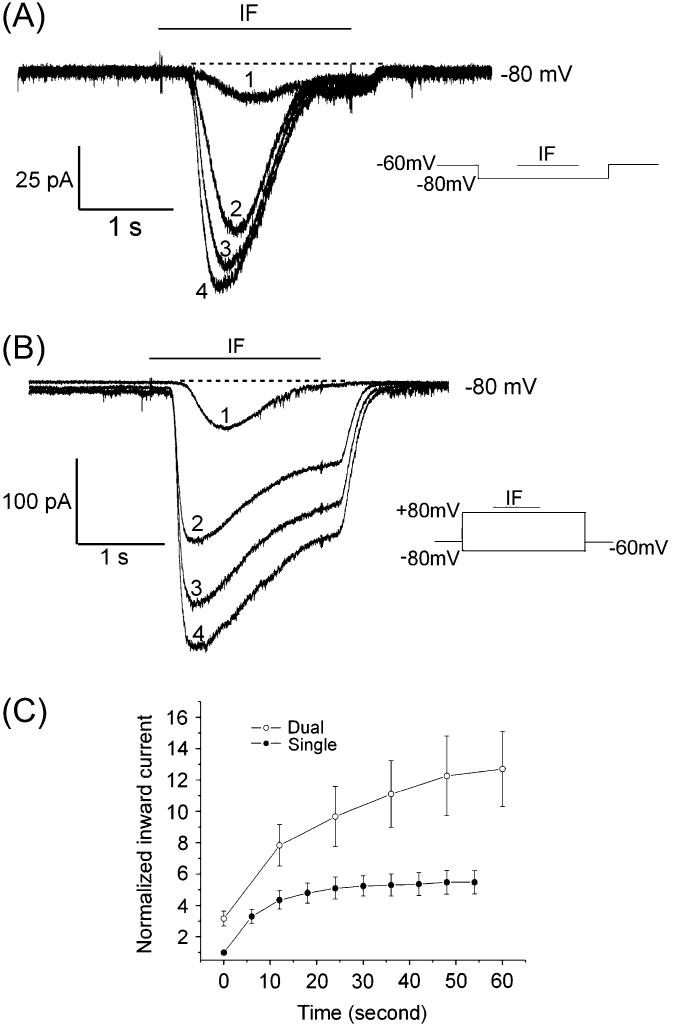Figure 2.
The increase in IF response was apparent with a single-voltage step and enhanced with a two-step protocol. (A) Pulse stimulation at −80 mV elicited a potentiation of the IF-elicited current. At −80 mV, repetitive stimulation increased the IF response. First recording (1) and other traces are numbered in the order collected. Each recording lasted 5 s, and there was a 1-s interval between them. (B) After a 5-min rest, the same OSN in (A) was stimulated with dual-voltage pulses, −80 and +80 mV. Only the −80mV current trace is displayed. 1, 2, 3, and 4 are the repetitive recordings numbered in the order collected. There was a 1-s interval between recordings. (C) Comparison of the potentiation of IF response from a single-pulse protocol to a dual-pulse protocol. To pool IF responses, the first Iin peak for each OSN was set to 1. Iin values in other recordings were calculated as fractions of the first Iin peak. The IF response was larger and increased faster and longer with the dual-voltage-pulse protocol (n = 9).

